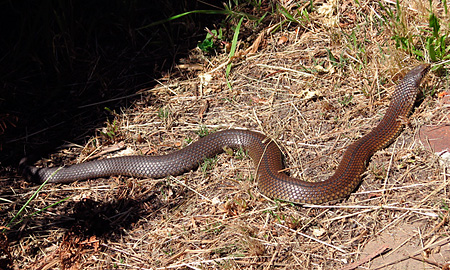Introduction
yellow faced whip snake biteSnake bites are a serious medical emergency situation that can happen in numerous atmospheres, particularly in areas where serpents are prevalent. In Australia alone, there are many varieties of poisonous snakes such as the Tiger Snake, Eastern Brown Snake, and King Brown Snake. Comprehending just how to properly manage serpent attacks is crucial for any individual that hangs out outdoors or lives in rural areas. This article will discover extensive first aid management approaches for serpent bites and describe finest practices for responding to these incidents.
First Help Management of Snake Bites: Best Practices for each Situation
When managing a snake bite, the initial action can substantially affect the sufferer's result. Immediate action is crucial since quick clinical intervention typically figures out the level of injury or survival price. Right here are necessary first aid principles to bear in mind:
Stay Calm: The very first step in managing a snake bite is to remain tranquil. Panic can boost heart prices and raise the spread of venom throughout the body. Call for Help: Dial emergency services promptly. Provide them with your area and any type of details about the snake if possible. Keep the Sufferer Still: Encourage the victim to remain as still as possible. Motion can raise blood circulation, speeding up venom absorption into the bloodstream. Positioning: If possible, place the affected limb at or below heart level. This positioning assists slow down poison spread. Remove Tight Clothing: Loosen any apparel or fashion jewelry around the bite site; swelling may take place rapidly after a serpent bite. Do Not Apply Ice/Cold Packs: Contrary to common belief, using ice can get worse cells damages and need to be avoided.Understanding Serpent Species and Their Habitats
Tiger Snakes and Their Habitat
Tiger serpents (Notechis scutatus) are among Australia's most notorious venomous serpents because of their hostile nature and powerful venom.
- Habitat: They commonly live in coastal regions, wetlands, and locations with thick plant life like marshes and swamps. Risks: Understanding of local tiger snake environments can decrease the danger of experiencing one unexpectedly.
Eastern Brown Snakes: A Substantial Threat
The Eastern Brown Serpent (Pseudonaja textilis) is one more extremely venomous varieties located throughout eastern Australia.
- Habitat: This serpent prospers in metropolitan locations, agricultural lands, and grasslands. Behavior: Understood for its fast strikes when threatened, understanding its actions may aid alleviate encounters.
Recognizing Signs of Serpent Bites
Identifying signs early can boost opportunities of effective treatment:

- Pain and swelling around the bite site Discoloration or bruising
- Nausea or vomiting Difficulty breathing Signs of shock (e.g., pale skin, fast heartbeat)
First Help Procedures for Details Serpent Bites
First Aid for Tiger Snake Bite
In situation of a tiger serpent bite:
Stay calmness; keep still. Call emergency services immediately. Immobilize the impacted limb using a splint if available. Do not try to draw out venom or use ice. Get more information
First Aid for Eastern Brown Serpent Bite
For an eastern brown snake bite:
Keep calmness; assure the victim. Call emergency situation services without delay. Position them conveniently while avoiding movement. Mark the sides of swelling with a pen when possible for observation.Creating Your Serpent Bite Emergency Treatment Kit
A well-prepared emergency treatment package can make all the distinction during emergency situations:
|Thing|Objective|| -------------------------------|---------------------------------------------------|| Compression bandages|To immobilize arm or legs|| Sterile gauze|To cover wounds|| Antihistamines|For allergies|| Emergency get in brown snakes touch with numbers|Quick gain access to throughout dilemmas|| Instruction manual|Step-by-step assistance on taking care of emergencies|
What Should You Never Do When Dealing With a Serpent Bite?
Here's a list of common risks when dealing with snake bites:
Do not apply tourniquets; they can cause more injury than good. Avoid cutting into or attempting to draw out venom from the wound. Never offer alcohol or stimulants to victims as it might aggravate their condition.
FAQs Regarding Emergency treatment Monitoring of Snake Bites
1. What should I do if I see a snake?
Stay calmness and pull back slowly without abrupt movements.
2. How do I determine if a serpent is venomous?
Research local types' features; several have distinct color patterns or markings.
3. Can I make use of ice on a snake bite?
No, using ice can raise cells damage.
4. For how long do I have after being attacked before looking for medical attention?
Seek medical focus right away-- time is vital with poisonous bites!
5. Is it secure to drive myself to the healthcare facility after a bite?
No! It's dangerous as symptoms might get worse en route; wait for professional help.

6. Are all serpents in Australia dangerous?
No! While Australia has several hazardous snakes, there are additionally non-venomous species that position no threat.
Conclusion
The first aid monitoring of serpent attacks needs punctual activity integrated with understanding regarding neighborhood types' habits and environments like those of tiger snakes and eastern brown snakes in Australia. By adhering to best methods detailed above-- such as remaining tranquility, calling emergency services promptly, and recognizing what not to do-- you substantially enhance survival opportunities after such mishaps occur.

Equipping on your own with knowledge concerning different sorts of snakes in your area and preparing a proper first aid package will certainly guarantee you prepare needs to an encounter develop-- making you much better prepared to manage this possibly lethal circumstance effectively!